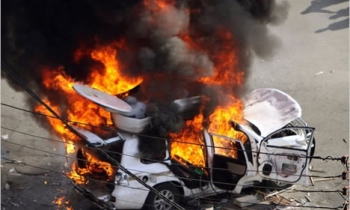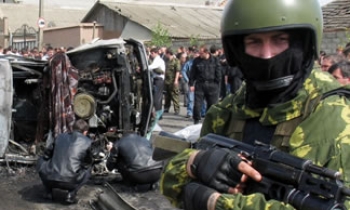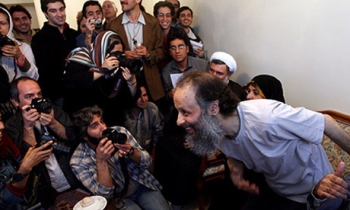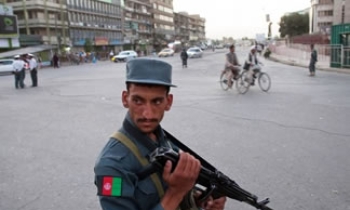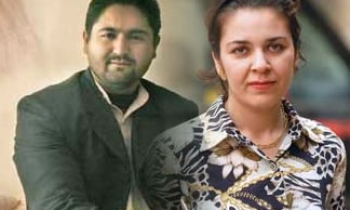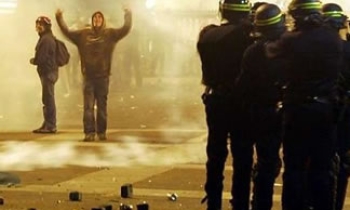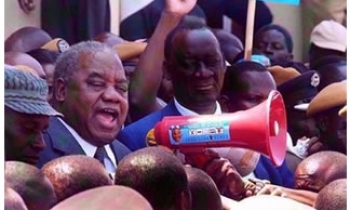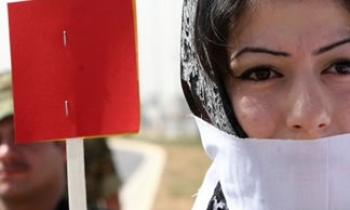The murders of three more media workers has brought the number of journalists and media assistants killed since the start of the war in March 2003 to 154, the International Federation of Journalists (IFJ) has reported. IFJ and other press freedom organisations have condemned the new wave of violence and the fact that authorities have not so far conducted investigations that could put an end to the impunity.

IFJ says that Iraqi journalists risk being killed by any number of groups as the security situation there slides out of control. These threats make critical or investigative reporting impossible. The daily attacks on media constitute a terrible assault on press freedom and democracy in Iraq. IFJ called on the Iraqi government and the US military to protect journalists and freedom of the press in Iraq.
"Iraqi journalists are the victims of both political and sectarian killings," Reporters sans Frontières (RSF) said. "They are now one of the main targets for armed groups. They are also the victims of US army abuses — above all arbitrary arrests on accusations of having links with armed militias."
RSF said in a statement: "Journalists are more vulnerable to attacks because of media exposure, because everyone knows their names and faces. A total of 51 journalists and media assistants have been killed since the start of the year and the current climate suggests that no positive change is on its way."
Saad Mehdi Shalash, a journalist working for the daily Rayat Al Arab, was killed with his wife in Baghdad on October 25. A Shiite, he had received many threats and had decided to move to a safer neighbourhood. The couple had gone back to their former home in the district of Al-Amriya to collect the last of their belongings when they were killed.
Naqshin Hamma Rashid, 30, a presenter on the Kurdish-language TV station Atyaf (part of the Al-Iraqiya group), was murdered in her car along with her driver, Anis Qassem, in the centre of Baghdad on October 29. Rashid, a Kurd who was also known by colleagues as Sherin Rashid, presented Kurdish-language news on Atyaf. She presented programmes targetted at Iraq's Kurdish and Christian minorities and had received anonymous threats in the past. She had also decided to move to a safer place, but her attackers intercepted her as she was going to work.

In another case of violence against the media, a mortar shell exploded within the perimeter of the headquarters of the Al-Iraqiya satellite TV station in Baghdad, wounding two guards.
"We condemn the brutal murders of these Iraqi journalists and support workers, and we offer our condolences to their families," Committee to Protect Journalists (CPJ) Executive Director Joel Simon said. "Journalists in Iraq continue to pay the ultimate price for practicing their profession."'CPJ is investigating the murders of other journalists in recent days to determine whether the killings were related to their work.
Police on October 30 discovered the body of Abdelmajid Isma'il Khalil, a 67-year-old freelance journalist for several local papers, according to the Journalistic Freedoms Observatory, an Iraqi press freedom organization. Khalil was abducted on October 18 by unidentified gunmen who intercepted his car in Baghdad's eastern neighbourhood of Jamila.
On October 13, unidentified gunmen murdered Raed Qais, a journalist for the Aswat al-Iraq (Voices of Iraq) news agency, according to CPJ sources. Unidentified gunmen in a car blocked the journalist while he was driving and shot him to death in Baghdad's northern neighborhood of Al-Dura, the Journalistic Freedoms Observatory reported, citing Aswat al-Iraq broadcasts. Qays' sister, a passenger, was unharmed, the Observatory said. Qays, 28, also worked for Radio Al-Sumaria, part of the Iraqi satellite network Al-Sumaria, based in Beirut.
The very low position (119th) assigned in the latest RSF World Press Freedom ranking to the United States for its behaviour outside US territory is above all explained by the US army's violations of the rights of the local press in Iraq. Arbitrary arrests, unlawful detention and unlawful searches are still routine, RSF said.

On October 26, the US army arrested two journalists, Rabiaa Abdul Wahab and Ali Burhan, who work for radio Dar Al Salam, a station linked to an Islamist party. They were reportedly detained because of their suspected links with armed groups, but the lack of transparency with which the US authorities operate in Baghdad meant the real reasons for their arrest and their conditions of detention remained unknown.
US troops also raided the headquarters of the Al-Furat TV station without a warrant on October 23, disarming guards, searching the premises and seizing computer material. The station, which is linked to a Shiite group, was able to continue broadcasting and reported the raid on the air while it was still going on.
According to RSF, 51 journalists and media assistants have been kidnapped in Iraq since the start of the war, in addition to the 126 who have been killed. Four of them are still being held hostage.
The cold-blooded murder by masked gunmen of 11 employees of a fledgling satellite TV channel in Baghdad on October 12 was the deadliest single assault on the press in Iraq since the US-led invasion in March 2003. Gunmen in at least five vehicles drove up to Al-Shaabiya television in the eastern district of Zayouna around 7 a.m., Reuters reported. They burst into the station’s offices and executed 11 people and wounded two.
Executive manager Hassan Kamil told Reuters that the station had no political agenda and that the staff had been a mix of Sunnis, Shiites, and Kurds. The station had not been threatened previously. Kamil said some of the gunmen wore police uniforms, and all were masked. According to reports the gunmen’s cars resembled police vehicles.

